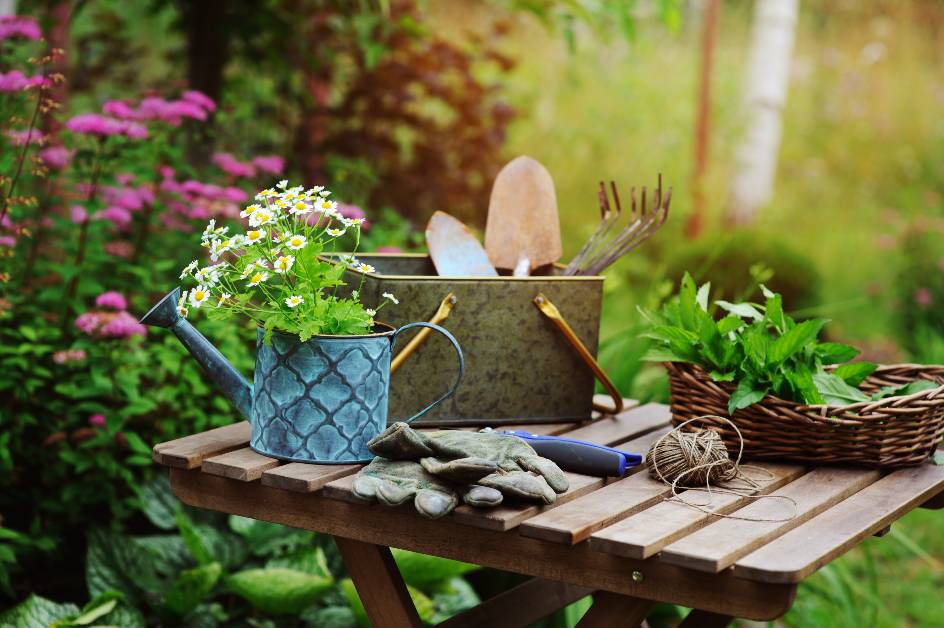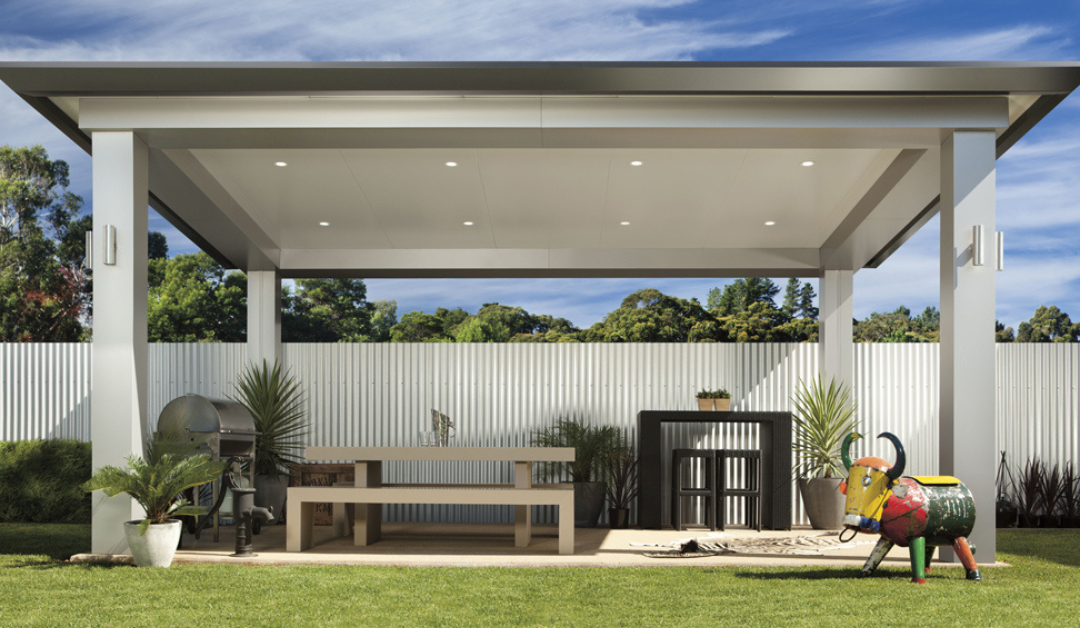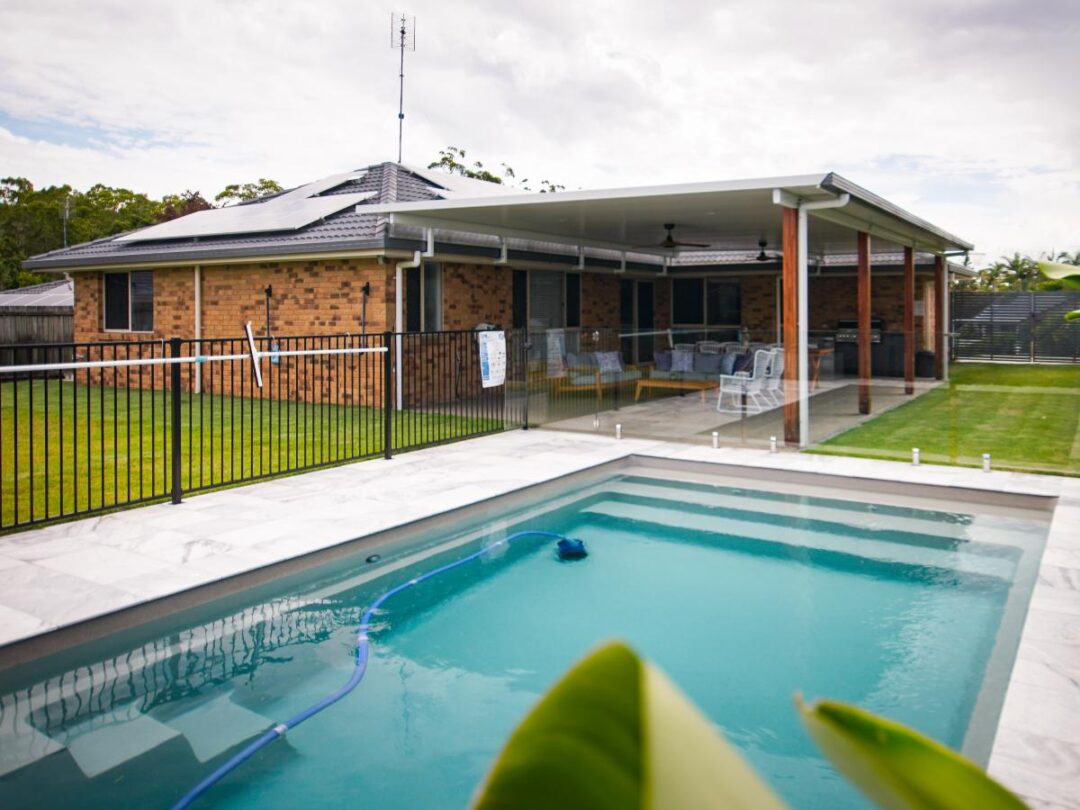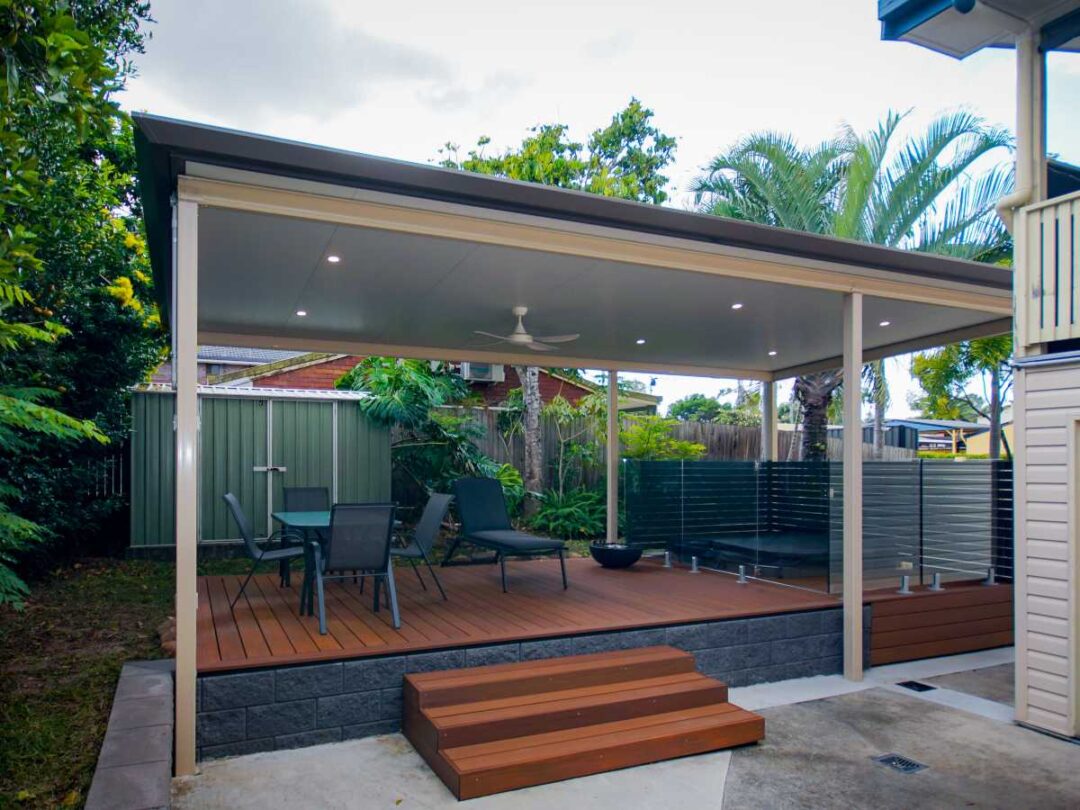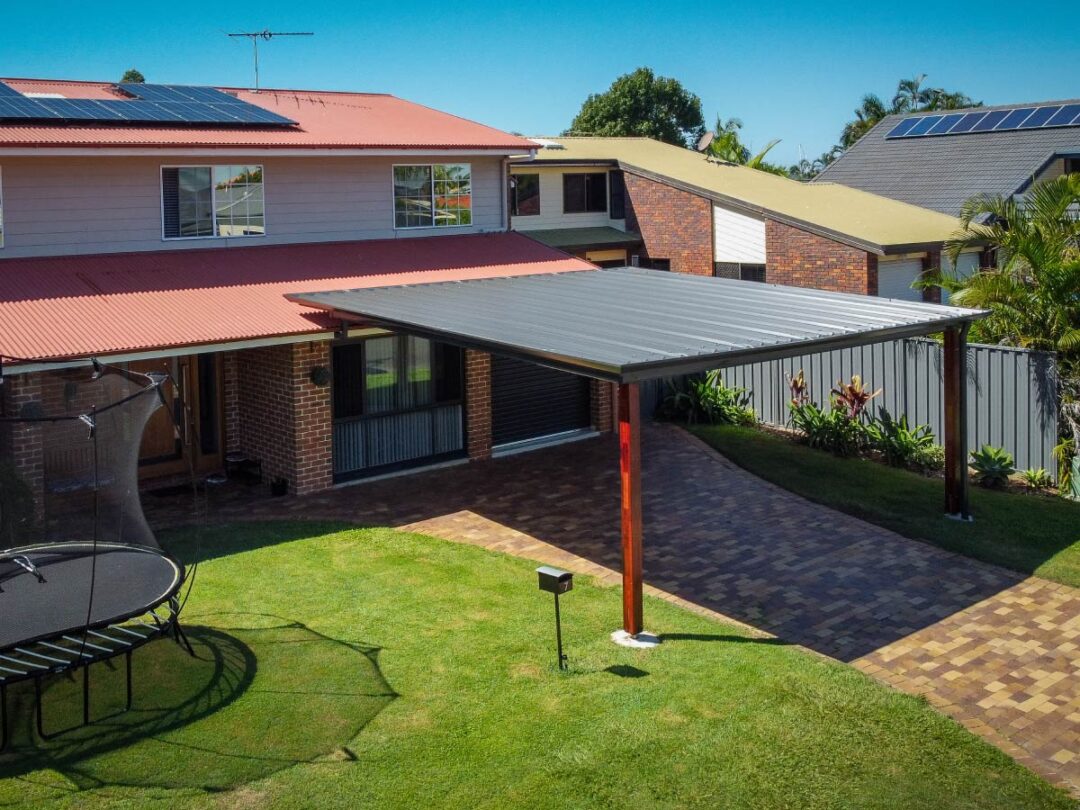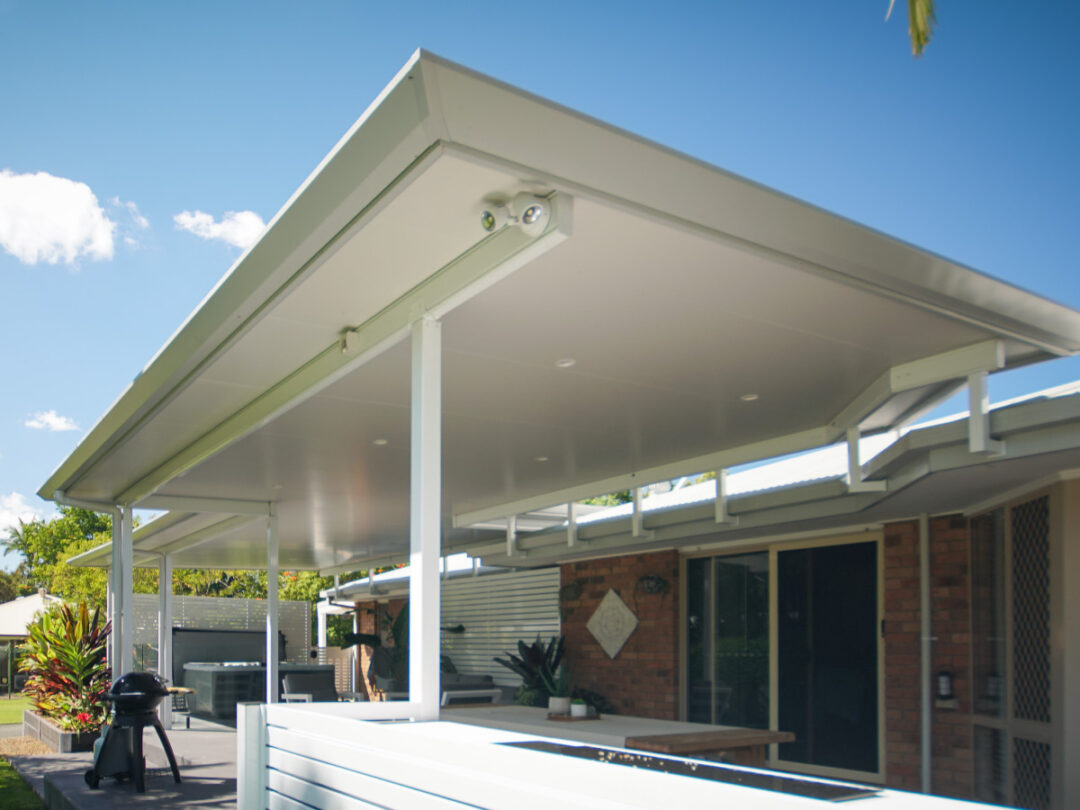Have you dreamed of a stunning pergola centrepiece in your backyard that’s surrounded by greenery and looks like the perfect place to enjoy some sunlight while sipping on a lovely iced tea?
Pergolas and plants go together like tea and sugar, so it’s no surprise that many Aussie homeowners want to utilise their space to feel better connected with nature. One issue many people find in tropical Queensland is the harsh climate can make it hard to find plants that will not only survive but thrive. You need plants that’ll thrive in sun and humidity. Well, fret no more! We’ve rounded up the top pergola plants perfect for Queensland gardens. From lush cascading vines to vibrant blooms, these beauties will transform that bare pergola into an oasis in no time.
Read on to discover our recommendations for the best climbing, hanging, and potted pergola plants you need in your backyard. With the right picks, your pergola will become the heart of your garden in Queensland.

Choosing the Best Pergola Plants for Queensland
When choosing plants for under your pergola, consider Queensland’s hot and humid climate. Tropical foliage that provides dense shade is ideal.
Palm Trees

With their large fronds, palm trees offer dappled shade perfect for pergolas. Golden cane can be an excellent screening option, growing in dense rows. Cuban Royal palms are a recognisable Queensland classic, spotted in many metropolitan areas or in rows along coastal trails. These high-reaching palms are quick growing and can provide some fantastic coverage on your property without massive trunks occupying too much room.
Pergolas only offer partial shade, so if your property is located in a particularly sunny location, the shade provided by these palms will make your space so much more enjoyable.
Climbing Plants

Climbing plants like Bougainvillaea, Pandorea jasminoides or Bower Vine and Passiflora or Passionfruit vine can be trained up privacy screens or through latices and climbing grids. Their flowers will cascade down, providing vibrant colour and fragrance. The dense foliage also offers shade in summer while allowing light through in winter.
Groundcovers

For groundcover under a pergola, consider Dichondra ‘Silver Falls’ or native Violet. Their low spreading habit will fill in the space under the pergola, preventing weeds while the silver foliage reflects light.
With the right combination of tropical foliage, flowering climbers and groundcover, you can transform a pergola into an lush outdoor oasis. Our team at SEQ Patio Group can help bring your perfect pergola paradise to life.
Best Climbing Vines to Grow In Qld
Note – growing climbing vines on your steel pergola may affect the warranty coverage. Check with the manufacturer or consult the warranty documentation to ensure that plants will not void the warranty. For best practice, we recommend growing vines over a lattice or privacy screen and trimming them when they reach over to the actual pergola structure.
Bougainvillaea

Bougainvillaea provides a pop of colour with its papery red, orange or pink flowers. Although it prefers full sun, bougainvillaea will still bloom with some shade and does well under pergolas. It may take a few seasons to establish but with regular pruning and fertilising, bougainvillaea will reward you with an abundance of flowers.
Star Jasmine

Star jasmine, with its deliciously scented white flowers, grows vigorously and will quickly cover your screens in lush greenery. You’ll want to prune it regularly to control its spread, but its shade tolerance and low maintenance needs make it an easy, rewarding vine to grow.
Pandorea jasminoides (Bower Vine)

The Bower Vine is a popular climbing plant for Queensland gardens. Producing delicate pink flowers, this vine will quickly cover a pergola. It thrives in full sun and well-drained soil. Prune after flowering to keep its size under control.
Hardenbergia violacea (False Sarsaparilla)

The False Sarsaparilla vine features purple pea flowers from winter to spring. Native to Australia, it grows in full sun or part shade and handles most soil types. Once established, it requires little maintenance. This hardy vine will provide colour when other vines are dormant.
Passiflora caerulea (Blue Passionflower)

For a tropical feel, plant the Blue Passionflower. This vigorous vine produces exotic purple and blue flowers in summer. Plant in a spot with protection from strong winds. While it can handle light frosts, it may need protection in very cold weather. The Blue Passionflower requires full sun and moist, well-drained soil. Prune after flowering to control growth.
With the right combination of sunlight, water and nutrients, these beautiful vines will transform a pergola into a lush, green retreat. By selecting vines suited to Queensland’s warm climate, you’ll be enjoying their colour and fragrance for years to come.
Hanging Ferns and Planters
Ferns and trailing plants are ideal for hanging baskets under a pergola. Their cascading foliage helps create a lush, tropical feel while complementing the vertical posts and beams.
Asplenium bulbiferum (Hen and Chicken Fern)

This hardy fern produces fronds with plantlets that drop off and root where they fall. It’s easy to care for and handles medium light, thriving in the dappled shade under a pergola.
Nephrolepis exaltata (Boston Fern)
A popular variety, the Boston fern features arching fronds that can reach up to 3 metres long. It prefers medium to low light and humid conditions, so mist it regularly or place its hanging basket over a pebble tray.

For flowering accents, try petunias, geraniums or begonias in hanging baskets. Their colourful blooms will attract birds, bees and butterflies to your pergola retreat. Trailing plants like strawberries, nasturtiums or creeping thyme also work well and provide an edible treat.
When choosing planters, select ones made of natural materials like terracotta, wicker or untreated wood that complement your pergola’s style. For the healthiest plants, use a premium potting mix and controlled-release fertiliser. Place a saucer under the planter to catch excess water and prevent stains on patios and decks below.
With the right choice of plants and planters, hanging baskets and ferns can transform a bare pergola into a lush outdoor haven. For advice on the best options for your climate and tips on care, consult the experts at SEQ Patio Group.
Small Trees That Grow In Pots
If you have limited space under your pergola, consider small trees that can thrive in containers. Their compact size means they won’t overpower the area, but they’ll still provide greenery and possibly flowers.
Dwarf Frangipani

The frangipani is an iconic tropical tree, but dwarf varieties like ‘Apricot Sunrise’ only reach 1.5-2m tall, perfect for pots. Their fragrant yellow flowers will scent the pergola. Plant in free-draining soil and water moderately.
Brisbane Box
This native rainforest tree has glossy green leaves and white flowers. The ‘Baby Bear’ cultivar only reaches 3m, suited to container growing. It’s low-maintenance but prefers semi-shade and moist soil.
Camelia Sasanqua

With pink blooms in autumn and a maximum height of 2-3m, camellias are ideal small trees for pergola pots. Plant in acid soil and part-shade. Prune after flowering to shape.
Coral Tree
The dwarf ‘Tropic Coral’ eucalyptus reaches 3-5m, with colourful red flowers and peeling bark. It thrives in full sun and well-drained soil, requiring little water once established. Prune to shape.
For the best results with small potted trees, choose a quality potting mix and fertilise during the growing season. Repot every 2-3 years in a container one size larger. Keep the soil moderately moist, and place pots in a sheltered position protected from strong winds. With the right care and conditions, small potted trees can live for many years and enhance your pergola space.
Miniature Palms
Several palms grow well in pots and won’t grow too high, making them an attractive feature under your pergola. From the thin Kentia Palm to the thick tropical foliage of the Raphis excelsa palms, there are several palm types that will look great potted under your pergola.
Beautiful Flowering Pergola Plants for Queensland Gardens
Bougainvillaea
With their colourful papery flowers, bougainvillaeas are a perfect choice for pergolas. They do well in hot, humid climates and come in shades of red, orange, pink, purple and yellow. Bougainvillaeas can be trained to grow over pergolas, providing dappled shade and splashes of vibrant colour. Prune them after flowering to control their size and shape.
Hibiscus
Large, lush hibiscus flowers will make a stunning display over your pergola. The huge blooms only last a day but are continually produced throughout the warmer months. Hibiscus thrives in tropical climates and come in a variety of bright colours like red, yellow, pink and orange. They can grow quite quickly so may require regular pruning.
Passionfruit
For pergolas, nothing beats the sweet fragrance of passionfruit flowers. The vines produce egg-shaped orange fruit that are also edible. Passionfruit vines require a sturdy trellis or pergola to climb on and may need some hands-on involvment to guide their growth. Prune them after harvest to control size and promote new growth. The fast-growing vines provide dappled shade and a delicious summer treat.
Jasmine
Fill your pergola with the sweet smell of jasmine. The petite white flowers have an intoxicating fragrance that is especially noticeable at night. Jasmine vines grow quickly and will cover a pergola to provide shade and fragrance. Pruning after flowering will keep it under control and promote new growth. The dense foliage also offers privacy while still allowing light to filter through.
Designing Your Ideal Pergola Garden

Once you have the pergola structure in place, it’s time to start planning what plants you want to feature. For many gardeners, designing the plant layout is the most exciting part! Think about how you want to use the space – a relaxing retreat, an entertainment area, or a bit of both.
Consider a theme to tie it all together, whether that’s a colour scheme of complementary hues or a particular plant genus. Tropical plants like bougainvillaea, passionfruit, and orchids can transform a pergola into an exotic escape. For a native garden, grevilleas, banksias and even gymea lilies would be ideal.
Group plants with similar light and water needs together for easier maintenance. Place taller specimens, trellises or vines around the edges so they can climb up and over the pergola beams without crowding the centre. Leave enough open space for a table and chairs or walking paths.
Once you have a design in mind, make a list of the plants you want to include. Visit your local nursery to find healthy, established options that will provide quick coverage and impact. Ask about their sun, water and pruning requirements to ensure a low-maintenance garden.
With the right design and plant choices, your pergola garden can become a peaceful oasis for you to enjoy for years to come. Start with a simple plan to get the bones in place, then build on it each season as you find new favourites to add. Your perfect pergola paradise awaits!
Pergola Plant FAQs
Can Climbing Vines Climb Metal Pergolas?
Yes, many climbing vines have no issue snaking up the metal posts, however it is advised to train vines to climb up privacy screens or climbing frames under or beside the structure instead of on the structure itself.
Can Plants Damage a Pergola’s Structure
It’s unlikely that plant growth will damage your metal pergola. SEQ Patio Group utilise Stratco pergola materials, which are made from Colorbond steel that has a high rating for durability and corrosion resistance. However, introducing acidic soils or fertilisers and regularly applying moisture to the pergola structure could affect it in the long run. Before planting climbing vines on your Stratco pergola, it’s advisable to review the warranty documentation or contact Stratco directly to inquire about any potential implications for the warranty. They can provide you with accurate information regarding whether such modifications would affect the warranty coverage.
How Long Until Vines Will Cover a Screen
The time it takes for vines to fully cover a screen varies depending on factors like the vine species, growth rate, environmental conditions, and planting density. Fast-growing vines like morning glories or wisteria can achieve full coverage within a single growing season or a couple of years, while moderate growers like climbing roses or clematis may take a few years. Slow-growing vines such as ivy or Virginia creeper may require several years to cover a screen completely. Optimal environmental conditions, including sunlight, soil quality, and moisture levels, can accelerate growth. However, patience is key, and providing proper support and spacing can help expedite coverage without overcrowding.


